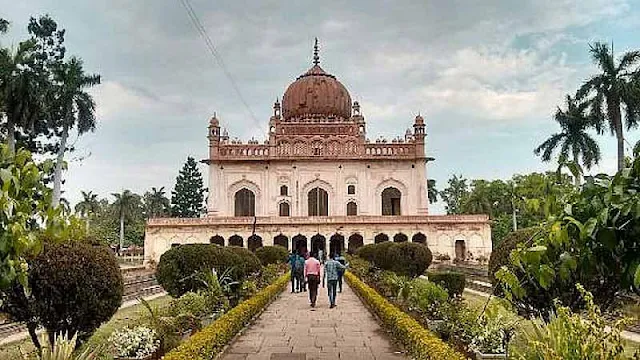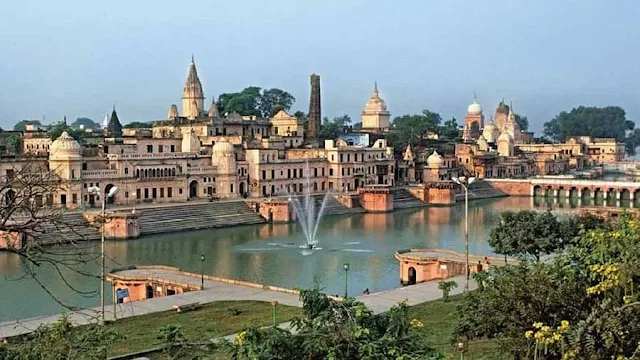Ayodhya tourist places / Offbeat : A Fascinating Journey Through Its Rich Cultural Tapestry
 |
| Ram Mandir, Ayodhya |
Nestled along the banks of the sacred Sarayu River, Ayodhya is a city steeped in history, mythology, and spirituality. Known as the birthplace of Lord Rama, Ayodhya is a treasure trove of tourist places that offer a glimpse into its vibrant cultural heritage. Join us on a virtual journey through the enchanting attractions that make Ayodhya a must-visit destination for travelers seeking a harmonious blend of history, spirituality, and natural beauty.
Andaman Tourist Attractions- Comprehensive Andaman Travel Guide
- Ram Janmabhoomi: The heart and soul of Ayodhya, Ram Janmabhoomi holds immense religious and historical significance. This sacred site is believed to be the birthplace of Lord Rama, a revered figure in Hindu mythology. Pilgrims from around the world visit the Ram Janmabhoomi complex to offer their prayers and witness the breathtaking architecture of the Ram Mandir. The serene atmosphere and the spiritual aura make it a soul-stirring experience for visitors.
- Hanuman Garhi: Perched atop a hillock, Hanuman Garhi is a prominent temple dedicated to Lord Hanuman, the loyal devotee of Lord Rama. The temple complex, with its orange-colored spires and intricately carved entrance, offers panoramic views of Ayodhya. Devotees and tourists alike flock to this sacred spot to seek blessings and enjoy the tranquil surroundings.
- Kanak Bhawan: Dedicated to Lord Rama and his consort Sita, Kanak Bhawan is a beautifully adorned temple showcasing vibrant frescoes and intricate carvings. According to legend, this palace-like structure was a wedding gift from Lord Rama's stepmother, Kaikeyi, to Sita. The exquisite artwork and vibrant colors make Kanak Bhawan a visual delight for art enthusiasts and devotees.
- Treta Ke Thakur: Situated near Ram Janmabhoomi, Treta Ke Thakur is a temple dedicated to Lord Rama. The name translates to "Deity of Treta," referring to the Treta Yuga, an age in Hindu cosmology. The temple is known for its peaceful ambience, attracting devotees who come to pay their respects and immerse themselves in the spiritual energy.
- Nageshwarnath Temple: Dedicated to Lord Shiva, the Nageshwarnath Temple is one of Ayodhya's oldest temples. Its historical significance lies in the belief that Lord Rama's son, Kusha, established this temple. The temple's ancient architecture and the serene atmosphere provide a unique spiritual experience for visitors.
- Guptar Ghat: Nestled along the banks of the Sarayu River, Guptar Ghat is a serene and picturesque spot where pilgrims take a holy dip to cleanse themselves spiritually. The ghat also houses the Guptar Ghat Kund, believed to have medicinal properties. The tranquil setting and the soothing sound of the river make it a perfect place for reflection and relaxation.
Lakshadweep Travel Guide | How to Travel to Lakshadweep Paradise
Beyond the Temples: Ayodhya's Hidden Gems for Offbeat Explorers / Ayodhya offbeat tourist places
 |
| Gulab Bari, Ayodhya |
While Ayodhya is renowned for its historical and spiritual landmarks, the city also harbors hidden gems that cater to the adventurous souls seeking offbeat experiences. Venture off the beaten path and discover Ayodhya's lesser-known treasures that promise a unique blend of history, nature, and culture.
Gulab Bari (Rose Garden): Tucked away from the bustling crowds, Gulab Bari is a tranquil garden that offers a serene retreat. Known for its stunning array of roses and vibrant flowers, this hidden gem provides a peaceful ambiance for those seeking solitude amidst nature. The Mughal architectural elements within the garden add an extra layer of charm.
इसे भी पढ़ें -मोबाइल फ़ोन फोटोग्राफी से सम्बंधित वो सारी बातें जो आपको जानना जरुरी है | Mobile Photography Tips in Hindi
Ayodhya Art Gallery: For art connoisseurs, the Ayodhya Art Gallery is a delightful surprise. Showcasing a collection of local artists' works, the gallery serves as a platform for contemporary and traditional art forms. Visitors can immerse themselves in the vibrant colors and diverse artistic expressions that reflect the cultural richness of Ayodhya.
Bithoor: A short drive from Ayodhya, Bithoor is a quaint town with historical significance. Situated on the banks of the Ganges River, Bithoor is believed to be the birthplace of Lav and Kush, the sons of Lord Rama. The town exudes a serene charm with its ghats, temples, and the tranquil Brahmavart Ghat, making it an ideal escape from the city's hustle.
Lakshadweep Travel Guide | How to Travel to Lakshadweep Paradise
Ayodhya Royal Museum: Delve into Ayodhya's regal past by visiting the Ayodhya Royal Museum. Located near the Ram Katha Park, the museum houses artifacts, manuscripts, and items of historical importance related to Ayodhya's royal families. Explore the exhibits to gain insights into the city's rich cultural and historical heritage.
Sarayu Riverfront: While the Sarayu River is closely associated with religious rituals, the lesser-explored Sarayu Riverfront offers a different perspective. Stroll along the peaceful banks, enjoy the picturesque views, and engage in boat rides to experience the city's natural beauty away from the crowded pilgrimage sites.
Ayodhya Ki Paidi: A step away from the mainstream tourist spots, Ayodhya Ki Paidi is a series of ancient stepwells that served as reservoirs in the past. These stepwells are not only architecturally fascinating but also provide a cool respite, making them a perfect spot to relax and absorb the historical charm.
Best time to visit Ayodhya
The best time to visit Ayodhya is during the winter and early spring months when the weather is pleasant and conducive to outdoor activities.
October to March
Winter is the ideal time to visit Ayodhya, with temperatures ranging from cool to mild. The weather is comfortable for exploring the city's religious and historical sites, and it is also the festival season, with Diwali being a particularly vibrant time.
February to March
The post-winter months leading into spring provide a pleasant climate, making it enjoyable for sightseeing. The temperatures are moderate, and the blooming flowers add to the overall charm of the city.
Avoid the summer months (April to June) as they can be hot and humid, making outdoor activities less enjoyable. Monsoon (July to September) brings rain and can make travel challenging due to heavy rainfall. Planning your visit during the cooler and drier months ensures a more comfortable and enjoyable experience in Ayodhya.
Andaman Tourist Attractions- Comprehensive Andaman Travel Guide
frequently ask questions :
Q. What is the famous of Ayodhya?
Ayodhya's fame rests on its role as a sacred city deeply rooted in Hindu mythology, its historical significance, and its position as a major pilgrimage site. The recent construction of the Ram Mandir at the Ram Janmabhoomi has further solidified Ayodhya's prominence on the cultural and religious map of India.
Q. How many tourist places are there in Ayodhya?
Ayodhya boasts numerous tourist places, including the sacred Ram Janmabhoomi, the hilltop Hanuman Garhi temple, and the beautifully adorned Kanak Bhawan. The ancient Nageshwarnath Temple and the serene Guptar Ghat along the Sarayu River are also significant attractions. Other points of interest include Gulab Bari, Bithoor, the Ayodhya Royal Museum, and the picturesque Sarayu Riverfront. In total, Ayodhya offers a rich tapestry of over a dozen prominent tourist destinations.
Q. How can I spend a day in Ayodhya?
Start your day with a visit to the sacred Ram Janmabhoomi, followed by a serene stroll along the Guptar Ghat. Explore the historic Hanuman Garhi and Kanak Bhawan, then immerse yourself in the cultural heritage at the Ayodhya Royal Museum. Conclude your day with a peaceful evening by the Sarayu Riverfront, witnessing the breathtaking sunset.
इसे भी पढ़ें -Yoga for health |All about international yoga day | योग कब कैसे और क्यों ?
Q. How much time is sufficient to visit Ayodhya?
Q. What is famous to eat in Ayodhya?
Q. Is mobile allowed in Ayodhya temple?
Q. How much is the helicopter ticket in Ayodhya?
Q.How to plan Ayodhya trip?
- Research and list key attractions like Ram Janmabhoomi and Hanuman Garhi.
- Create a day itinerary, considering religious sites and offbeat places.
- Book accommodation in advance, prioritizing proximity to major attractions.
- Arrange transportation via road or rail to reach Ayodhya.
- Respect local customs and traditions, especially at religious sites


